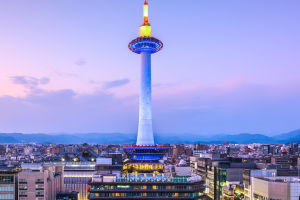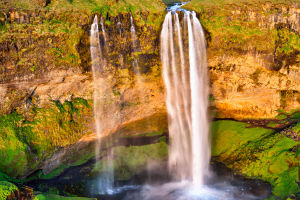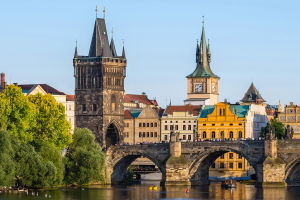Lykkers who crave untouched nature, remote adventures, and pristine turquoise waters will find Kiribati to be a rare treasure. This island nation is far from the beaten path, scattered across vast stretches of the central Pacific Ocean.
It promises a quiet escape, deep natural beauty, and cultural experiences shaped by its unique geography and environment.
Where Kiribati Is and How to Get There
Location in the Pacific:
Kiribati consists of 33 coral atolls and islands spread across 3.5 million square kilometers. It lies in Oceania, straddling the equator and the International Date Line—making it the only country in all four hemispheres.
The country includes four island groups: the Gilbert Islands, the PhoenixIslands, the Line Islands, and Banaba.
Reaching Kiribati:
Flights to Kiribati are limited but possible. International travelers can fly into Bonriki International Airport in South Tarawa, usually via Nadi (Fiji) or Brisbane (Australia). Kiritimati Island in the Line group also has some international connections.
Getting Around:
Local travel relies on small domestic flights and boats. In South Tarawa, shared minibuses (known locally as “buses”) are the main form of public transport, costing around $0.20-$0.50 AUD per ride.
- Domestic Flights: Flights between islands (e.g., Tarawa to Kiritimati) can cost $150–$400 AUD one-way, depending on the route.
- Boats/ferries: Inter-island travel by boat varies; public ferries are cheaper ($10–$50 AUD), while private charters can cost $200+ AUD.
- Bicycle rentals: Available in South Tarawa for $5–$15 AUD per day.
- Taxis: Limited but available in urban areas, with fares starting at $3–$5 AUD for short trips.
What to Expect and When to Visit
Climate and Seasons:
The best time to visit Kiribati is from April to October. These months offer dry, pleasant weather with temperatures around 30°C and a cooling northeast breeze. November to March brings heavier rainfall, and cyclones may occur in some areas.
Natural Environment:
Due to its coral-based geography, the land is flat and narrow, with limited vegetation. However, coconut palms, pandanus trees, and breadfruit grow widely. Kiribati’s shallow coastal waters are rich in fish, and the coral reefs support diverse marine life.
Things to See and Do
South Tarawa:
As the most populated area, South Tarawa offers a window into daily island life. Visitors can explore markets, community spaces, and oceanfront paths. It’s also the hub for organizing trips to more remote islands.
- Local markets – Fresh produce, fish, and crafts ($2–$10 AUD for snacks/souvenirs).
- Community tours – Guided cultural visits ($10–$30 AUD per person).
- Bike rentals – Explore oceanfront paths ($5–$15 AUD per day).
Kiritimati Island:
Known as the world’s largest coral atoll, Kiritimati is famous for its beaches, lagoons, birdwatching, and world-class fishing. It also offers an excellent opportunity to experience eco-tourism away from modern infrastructure.
- Lagoon & beach fishing – Half-day charters ($200–$500 AUD).
- Bonefishing tours – Guided trips ($150–$400 AUD/day).
- Birdwatching tours – Spot rare species ($50–$100 AUD with a guide).
- Basic guesthouses – ($40–$100 AUD/night).
Protected Area PIPA:
This UNESCO-listed marine sanctuary is one of the largest in the world. While access is limited and requires permits, it is home to untouched coral systems, hundreds of fish species, and migratory birds. Most visits are through scientific or conservation programs.
- Research/conservation trips – Limited permits, often through NGOs or universities ($3,000+ AUD for expeditions).
- Liveaboard diving trips (rare) – ($5,000+ AUD for 10–14 days).
Beach Escapes and Snorkeling:
Uninhabited islands and quiet atolls make Kiribati a top destination for beach lovers. Many of the beaches remain empty, allowing for peaceful walks, shell collecting, and snorkeling in clear waters.
- Boat trips to outer islets – Half-day excursions ($50–$150 AUD).
- Snorkeling gear rental – ($10–$20 AUD/day).
Nature Walks and Birdwatching:
With 75 bird species, including the unique Bokikokiko, the islands are perfect for nature lovers. Guided eco-tours help spot local wildlife and understand the delicate environment of coral islands.
- Guided eco-tours – Spot endemic birds like the Bokikokiko ($30–$80 AUD).
- National park fees (if applicable) – ($5–$20 AUD).
Final Thoughts
Kiribati stands out as a peaceful escape, far from tourist crowds. Its scattered atolls, simple lifestyle, and vibrant marine life offer Lykkers a chance to slow down and reconnect with nature. While travel may require planning, the reward is a unique experience full of natural beauty, warm communities, and endless ocean views. For those seeking serenity and something truly different, Kiribati is an unforgettable destination.


